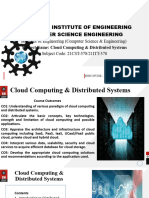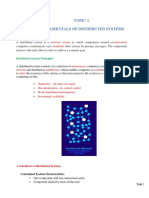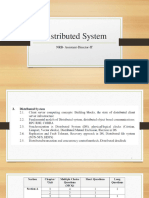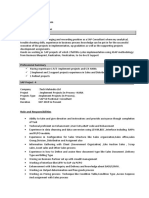0% found this document useful (0 votes)
12 views6 pagesAssignment 4 Parallel 2
The document discusses the differences between parallel and distributed systems, highlighting their architectures, communication methods, and fault tolerance. It also identifies various scientific and commercial applications of distributed systems, emphasizing their scalability, fault tolerance, and data handling capabilities. Additionally, it evaluates examples of distributed computing, confirming that web surfing, instant messaging, email, and YouTube usage are all instances of distributed systems, while using Excel on a standalone PC is not.
Uploaded by
s.aliagha7Copyright
© © All Rights Reserved
We take content rights seriously. If you suspect this is your content, claim it here.
Available Formats
Download as DOCX, PDF, TXT or read online on Scribd
0% found this document useful (0 votes)
12 views6 pagesAssignment 4 Parallel 2
The document discusses the differences between parallel and distributed systems, highlighting their architectures, communication methods, and fault tolerance. It also identifies various scientific and commercial applications of distributed systems, emphasizing their scalability, fault tolerance, and data handling capabilities. Additionally, it evaluates examples of distributed computing, confirming that web surfing, instant messaging, email, and YouTube usage are all instances of distributed systems, while using Excel on a standalone PC is not.
Uploaded by
s.aliagha7Copyright
© © All Rights Reserved
We take content rights seriously. If you suspect this is your content, claim it here.
Available Formats
Download as DOCX, PDF, TXT or read online on Scribd
/ 6





















































































